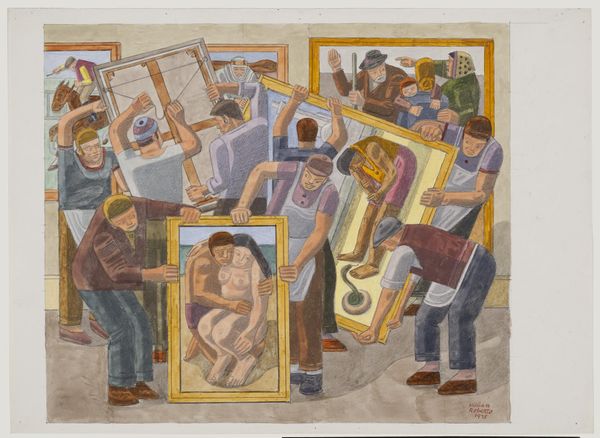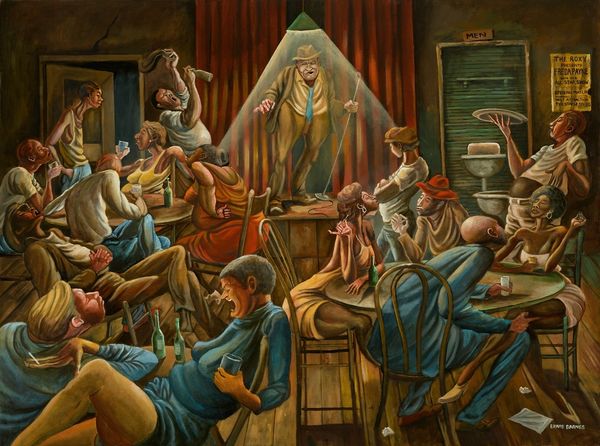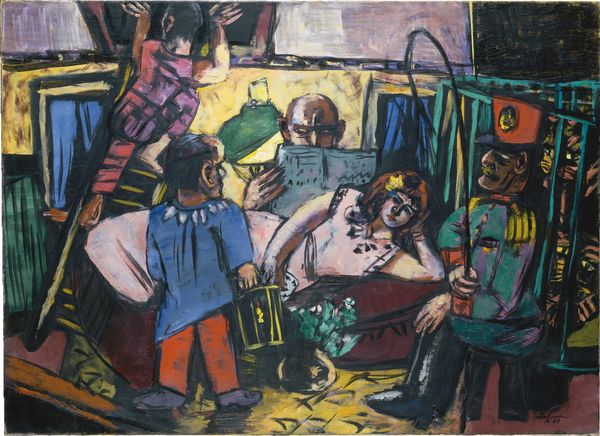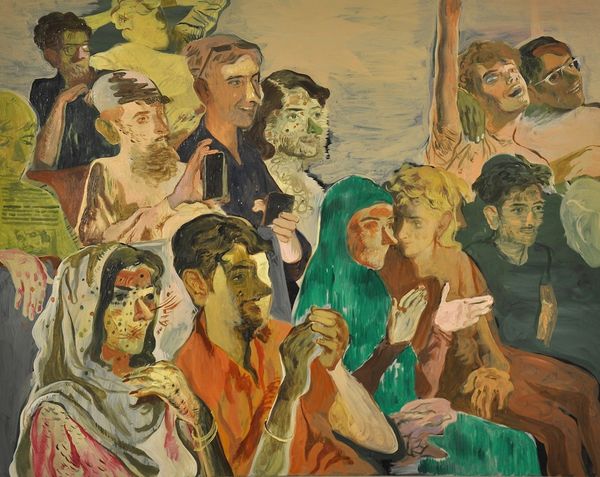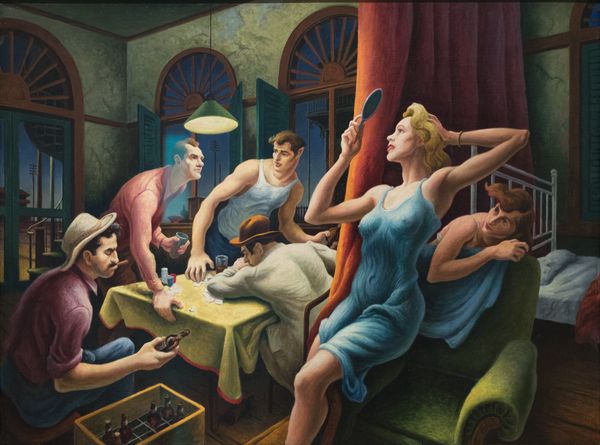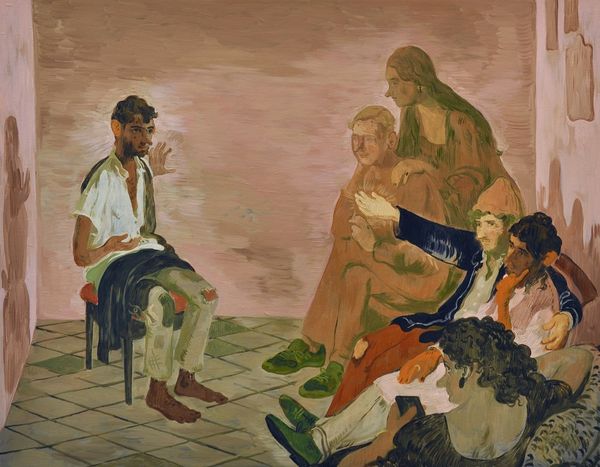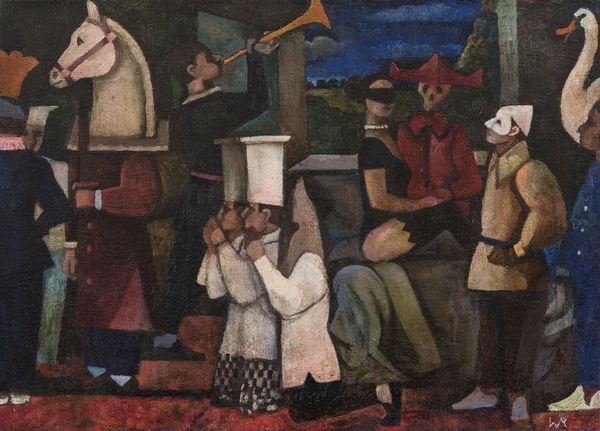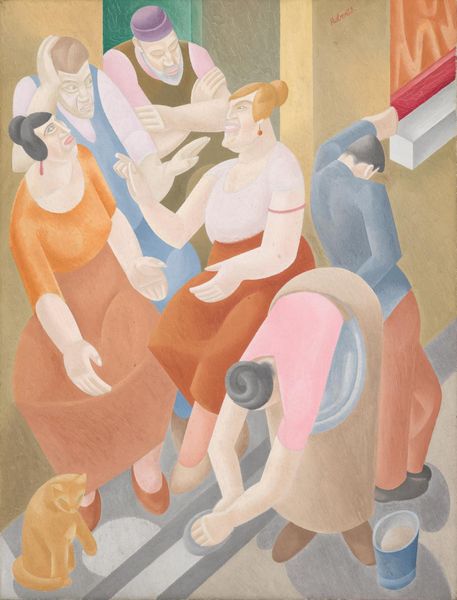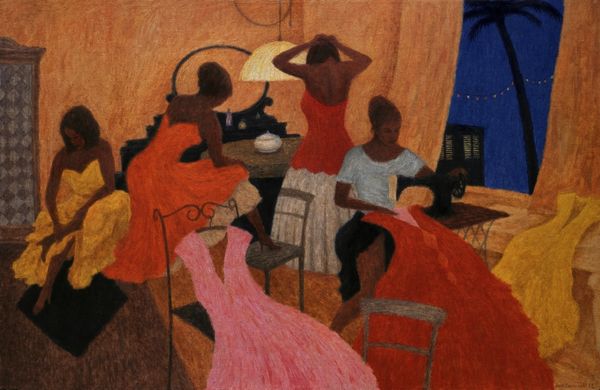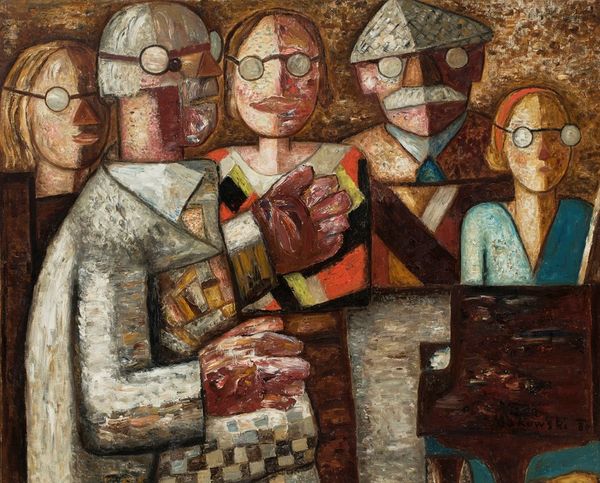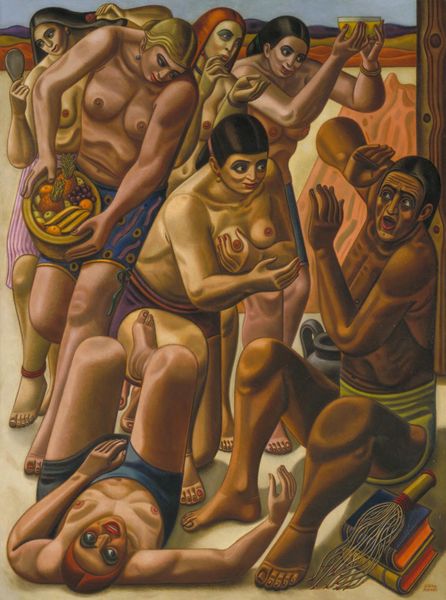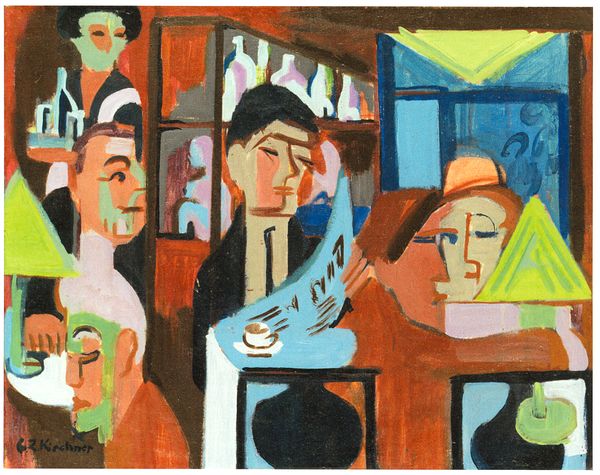
Dimensions: support: 489 x 591 mm
Copyright: © The estate of William Roberts | CC-BY-NC-ND 4.0 DEED, Photo: Tate
Curator: Welcome. Before us is "The Art Gallery" by William Roberts. The support measures 489 by 591 millimeters, and it resides in the Tate Collections. Editor: It has a strangely flattened quality, almost like a bas-relief. The people seem both familiar and remote. Curator: Roberts was deeply interested in the industrial processes and how they shaped the human form. Notice the figures, how they are almost like standardized components. Editor: Yes, but there's still a human element. The way they huddle together, the woman with the guidebook… it speaks to a communal experience, a search for meaning. Curator: The very act of visiting a gallery is a social performance, a ritual. Roberts seems to be exploring that. Editor: Indeed, it makes you think about how we create shared cultural memories through these spaces. Curator: It certainly invites a consideration of art consumption. Editor: A thoughtful piece that has much to tell us about the enduring power of images.
Comments
tate 7 months ago
⋮
http://www.tate.org.uk/art/artworks/roberts-the-art-gallery-t12741
Join the conversation
Join millions of artists and users on Artera today and experience the ultimate creative platform.
tate 7 months ago
⋮
The Art Gallery is a figurative oil painting on canvas by British artist William Roberts. As the title suggests, the painting depicts a group of people visiting an art gallery. In the background of the scene are two framed paintings hanging on a wall, each featuring a composition of abstract shapes. In the foreground, seated close together on a central brown bench, is a small crowd of figures. They are depicted in a stylised manner, with distinctive tubular limbs, stocky bodies, large eyes and hairstyles formed from blocks of colour. The group consists of an array of different types of gallery-goer and their interactions: two women are in conversation at the upper left, in front of one of the paintings, while another woman, seated next to them, is reading. Two sets of couples embrace and a mother is seen playing with her child. In contrast to these figures is a man who stands at the back of the bench, between the two paintings on the wall. Wearing a hat, scarf and glasses, he gazes directly forwards, possibly looking either at the group in front of him or out towards the viewer. None of the figures in the scene look directly at either of the artworks hanging on the wall. Roberts has used a palette dominated by browns, flesh-coloured tones and the pale yellow of the gallery wall in the background. These are offset by more colourful, though muted, hues, such as purple, blue and red for some of the figures’ clothing and shoes, and blue for the right-hand painting on the wall.
